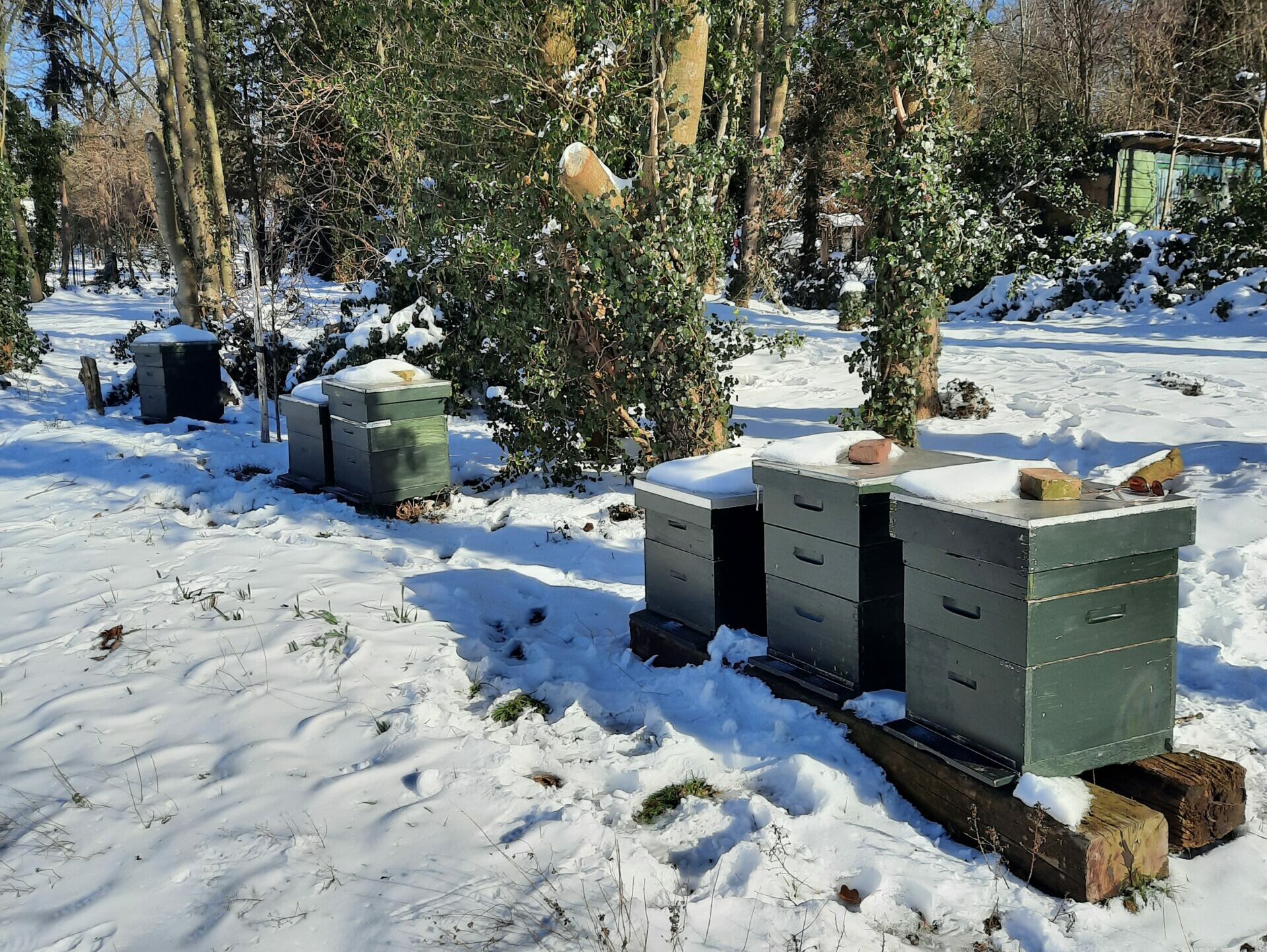Almost 30% of Dutch beekeepers work with what are disparagingly called bastard bees. Jokers also refer to them as F-16s because of the supposed aggressiveness of these bees. The impression is created that only those who work with purebred bees have reached a higher beekeeping level, while the ‘bastard beekeepers’ just muddle along. This image does not always correspond with reality. In this article I want to discuss what it means for a beekeeper to work with local bees and local mating. Is it possible to keep bees successfully and pleasantly in this way?
Introduction
In my beekeeping library I have an old book by Wolfgang Golz (whom I mentioned elsewhere in these pages – (see ‘2 x 9 = Golz’) about beekeeping with ‘the’ landrace. In this booklet he advocates beekeeping with bees that do not belong to a known race and also local mating.
According to Wikipedia, a landrace is a dynamic population of plants or animals that is maintained on site without significant selection and has adapted to its environment over the years. The central question in this article is whether such a landrace could form and/or maintain itself in the current Dutch beekeeping landscape.
Local mating is the mating of young queens in an open population, hence with the drones they choose themselves. Is local mating a good idea? This is actually a strange question. The honeybee has survived for about 30 million years via local mating in an open population. Apparently it doesn’t work that badly.
In 2015, Kees van Heemert published a fascinating series of review articles in which he discussed a European study that showed that bee colonies of local origin were best adapted to the local situation and therefore had the greatest chance of survival (European bee project: the genetic diversity of bee colonies, see ‘Bijenhouden’ 2015 no. 3, 4, 5 and 6 (in Dutch)). Colonies with a locally bred queen lived on average 83 days longer than colonies with a queen that came from another location. It turned out that the interaction between environment and genotype, rather than the genetic origin of the queens, was the main cause of this. This study was artificial in the sense that the queens studied were in experimental situations. In the reality of beekeeping, in which queens are purchased or in which beekeepers in the area participate in joint queen rearing projects, nothing remains of this local characteristic.
The misconception that pure bred bees are superior lies in the fact that breeding success is often defined in terms of improving a number of characteristics such as honey yield, gentleness and steadiness on the comb, but not vitality. These characteristics are not necessarily linked (Bienefeld et al., 2016).
Selection
We can only call our beekeeping breeding if we sort the material produced in such a way that we only keep the best colonies. In fact, we all perform some sort of selection when we requeen the worst of two colonies and make a nuc from the best. But because we have little or no influence on the paternal side during the local mating process, in almost all cases we cannot achieve real breeding progress for the characteristics that many beekeepers are interested in, such as honey yield and gentleness. We can influence the paternal side a tiny bit by ensuring that we cut away the drone brood from inferior colonies, in anticipation of their imminent requeening, and allow as many drones as possible to be produced by the good colonies, but even then the effect is very small, since mating takes place at a distance from the apiary, which mainly involves drones from other apiaries. It would help enormously if all beekeepers in the area adopted a similar approach and applied strict criteria with regard to the quality of their colonies.
Strictly speaking, selection also means that we should not unite colonies and not combat Varroa. Colonies should be able to survive on their own, just as is done in the testing of queens in selection programmes.
Furthermore, nature helps out with selection: colonies that are too weak do not survive the winter. They are attacked and robbed by wasps before the winter (this can be seen on the bottom board by the rough wax mullet and dissected workers). Winter losses are indeed annoying, but they are an essential part of natural selection.
Bienefeld modelling study
A 2016 modelling study (Bienefeld et al., 2016) concluded that there is no ‘progress’ to be made by mating in an open population. At the same time, it was found that the absence of controlled mating results in a shift towards maternal genetic influence.
In the long term, breeding schemes with uncontrolled mating will lead to a lower degree of inbreeding and therefore to less loss of genetic variation than schemes in which mating is controlled. On the other hand, there are breeding schemes available that can minimize such loss.
Selection programs for honeybees are often defined by quantitative traits, such as honey production or gentleness, but, as mentioned above, it seems that these traits have little or no influence on the fitness of a colony. Incidentally, it is difficult to define what fitness actually means.
